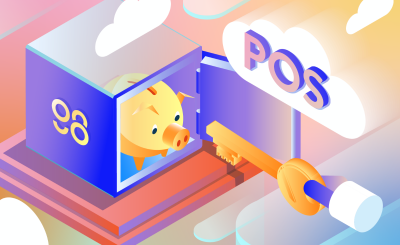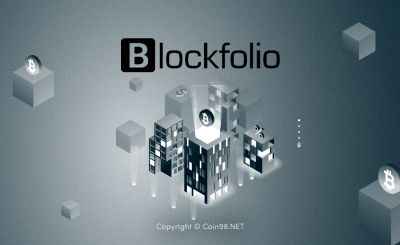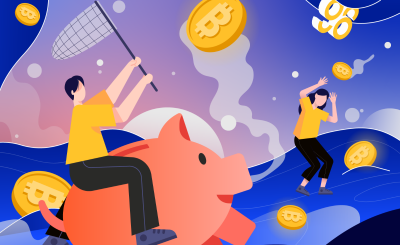Cryptocurrencies are known for their huge volatility in the short and long term. Although DeFi promises to take Crypto to another level from cryptocurrency to crypto assets in a new economy, most of them are often looked down upon for looking like speculative assets due to their highly volatile prices. Stablecoins promise to be a potential piece to connect the crypto space with the traditional financial market through its “stable” nature.
However, when it comes to Stablecoins, most of you think of Tether (USDT) and think that Stablecoin is a cryptocurrency that is converted to 1:1 value by the US Dollar. But that’s not true! There are many different types of stablecoins in the Crypto market, and USDT is just one of dozens of stablecoins currently on the market.
In this article, Techtipsnreview will provide you with information including:
- What are stablecoins?
- How many types of Stablecoins are there? How does the price balance mechanism of Stablecoins work?
- Are Stablecoins Trending?
Let’s find out with Techtipsnreview!
What are stablecoins?
A stablecoin is a cryptocurrency designed with the aim of minimizing the impact of price volatility by fixing it to a more stable asset such as fiat money, commodities (gold) , silver…), or maybe another cryptocurrency.
Stablecoins take advantage of characteristics of blockchain and peer-to-peer value transfer, while users are not subject to high volatility as from other cryptocurrencies.
What problems do stablecoins solve in Crypto?
Stablecoins appeared to solve the biggest problem in the current Crypto market, which is volatility.
- For traders or investors, they can move assets to stablecoins to avoid the volatility of cryptocurrencies without necessarily changing to fiat.
- For stores, It is difficult for any company to accept payment in 1 type of Crypto with a fluctuation of 20-30% in value in a short time. This, in turn, has made the widespread adoption of cryptocurrencies so much more difficult.
Thus, it can be seen that Stablecoins are important as a bridge between the electronic market and the traditional financial market. Converting from Fiat to crypto is much easier with the advent of Stablecoins.
As Erik Voorhees, CEO of Shapeshift observed:
“Stablecoins are important in the same way that a bridge is important. You may not care much about the bridge, but without it, the beautiful land beyond is much harder to get to”.

How to solve problems in the Crypto market of Stablecoins
Why are stablecoins important to crypto?
Most of us don’t feel comfortable with loss, which is further exaggerated when crypto is highly volatile and highly speculative, token prices can drop by tens of percent within a week, for For many people, this is very difficult to accept.
Eg, You trade winning a few orders and decide to take profits in BTC, about 1 week later, you lock BTC in VND and find that the amount of VND that you put in and out has no difference. How do you feel?
Stablecoins high risk/high return feature separation of crypto from the frequent fluctuations of crypto assets, “stable” characteristicmaking Stablecoin a cryptocurrency more suitable for storing and as a medium of exchange of value.
Stablecoin classification
Depending on the comparison criteria, they can classify stablecoins in different ways. The criteria I choose to classify stablecoins in this article is “collateral ratio” (also known as “backed”).
The reason for choosing the collateral ratio classification is that collateral plays an important role in supporting stablecoin prices in the peg, by creating a return on reserve assets.
As such, Stablecoins will include:
- Full-reserve Stablecoins.
- Partial-reserve Stablecoins.
- Over-collateralized Stablecoins.
- Non-reserve Stablecoins.

Stablecoin classification
Full-reserve Stablecoin
These stablecoins on the market are USDC or USDT, they use the US dollar or equivalent highly liquid assets as a reserve, 1 USDC minted on-chain will have 1 US dollar or assets of equal value are held.
This type of stablecoin on the market is also known as Custodial or Centralized Stablecoin, because they require users to trust custodian, not smart contracts on-chain.
Despite concerns around centralization, currently, USDC and USDT are the two most used stablecoins in the world. DeFi.
Learn more details about USDT and the controversies surrounding the largest stablecoin in the market with this article: What is Tether (USDT)??
Partial-reserve Stablecoin
A typical stablecoin of this type is FRAX of Frax finance, for every minted FRAX coin on the market only a fraction of its value is held in USDC. Volatility and the remaining reserve will be absorbed by FXS (Frax Shares, project governance token).

After a period of activity, Frax’s pattern proved to work quite well as the price of FRAX remained hovering around its $1 peg level.
Over-collateralized Stablecoins
DAI is the most representative stablecoin of its kind on the market. Basically, for every DAI minted in the market, there will be $1.5-1.6 worth of assets collateralized in the Maker Vault.
If the value of the collateral falls below the minimum threshold (typically 150%), the Vault will be liquidated, reducing the supply to bring the DAI price back to the peg price.
Over-collateralized is a pretty good approach in the context that Crypto is a relatively low-liquidity market, this approach makes it possible for DAI to always be Backed by an amount of assets with a greater value than the total of DAI Minted. The limitation of this approach is that it is difficult to scale.
Non-reserve Stablecoins
Typical examples of this type are types Algorithmic stablecoinscan take for example Basis Cash.
In which, the system’s stablecoin, BAC, is issued without a reserve of collateral. Instead, value is fully preserved by algorithms that shrink and expand the supply when the BAC price is above and below the peg. This model assumes that parties are actively involved in maintaining the price of BAC in order to earn relevant incentives.
Example of how Basis Cash works.
Basis cash has 3 Tokens: BAC, BAS, BAB:
BAC is a Stablecoin – it is pegged to 1$ and has a daily stabilization mechanism.
When BAC trades above 1$:
- BAS Holder can Stake BAS => Earn Inflation (Earn BAC) according to the formula:
- (Your BAS/Circulating Supply BAS) * Total Supply BAC * (TWAP BAC Price – 1)
- => BAS Holder earns BAC Free, so according to the model theory, they will sell to the market to make a profit => Selling pressure pushes BAC price down to 1$.
When BAC trades below $1:
- Holder BAC can use BAC to buy BAB at the rate BAB = (BAC Price)^2.
- BAB does not expire and can be exchanged when the price of BAC is greater than 1$.
- For example, when a user is holding 10 BAC and the price of each BAC is $0.8, then the user can use 10 BAC to buy 15,625 BAB.
- Suppose, 3 days after BAC price increase to 1$, user can exchange 15.625 BAB = 15.625 BAC and sell BAC on DEX and earn almost 50% profit from his 10 BAC.
According to this pattern, buying pressure pushes the price of BAC to $1.
Stablecoins Price Stabilization Mechanism
All stablecoins require one or several mechanisms to correct the price when it deviates from the peg, by looking at the plausibility and feasibility of these mechanisms we can consider the idea of whether the project is feasible or not.
Some of the stablecoin price adjustment mechanisms that I find most remarkable on the market today: they are:
- Redeem & Expand.
- Algorithmic.
- Leveraged Loans.

Note, a project may use one or more of the ways below in combination to keep the stablecoin price around the peg level.
Redeem & expand
For Stablecoins like USDT or USDC when the price leaves the peg, the breed has the following balance mechanism:
- If USDC is trading at less than $1USDC holders should exchange USDC for underlying collateralthus buying a dollar for less than a dollar.
- If USDC is trading above $1the owner should collateral dollar to minted out USDC and sold it on the market to make the difference.
Algorithmic
I see there are 4 outstanding price balance models today;
- Model Seignorage (3 tokens) of Basic cash.
- Model Rebate (2 tokens) of Ampleforth.
- Frax Finance’s fractional model (2 tokens).
- Model of Terra (2 tokens).
In which, Terra’s model is considered the most successful, based on the scale and application of Terra’s stablecoin.
Terra’s stablecoin UST is minted by burning LUNA (Terra’s native token), with this model UST volatility is absorbed by LUNA:
- When the price UST < Peg Protocol sell LUNA to buy back Stablecoin.
- When the price UST > Peg Mint add USDT.
Leveraged Loans
Leveraged Loans is a rather complicated price balancing system, the famous stablecoin using this model is MakerDAO (DAI).
In it, users lock up collateral, such as Ethereum and other tokens, in collateralized debt positions (CDPs). They can then borrow DAI from the system.
Users can then unlock their collateral by paying back the borrowed DAI, plus a stability fee that accrues over time.
If the value of the collateral in the CDP falls below 1.5 times the value of the borrowed DAI, the debt position is automatically liquidated and the collateral is used to redeem the DAI.
Additionally, if the value of the collateral loses value rapidly and falls below the value of the borrowed DAI, the MKR token is minted to cover the shortfall.
Stablecoin Investing: Will Stablecoins Become Trending?
Before talking about the Stablecoin trend, let’s reiterate a little bit about the formation and development of the Stablecoin ecosystem from 2013 until now.
As you can see in the chart below, Stablecoins really exploded in 2018 with more than 36 consecutive Stablecoin projects hitting the market, accounting for more than 54% of the total current Stablecoins.

Besides, Stablecoins will continue to thrive with the participation of big players like JPM Coin of JPMorgan, Libra of Facebook.

Epilogue
I will summarize some of the main points of the article as follows:
The most important feature of Stablecoins is that it separates the high risk/high return characteristic of cryptos from the frequent volatility of crypto assets, making Stablecoins a more suitable cryptocurrency for storing and as a medium of exchange of value. .
According to the collateral ratio criterion, we have 4 types of stablecoins with different characteristics:
- Full-reserve stablecoins: USDC and USDT are the two most used stablecoins in DeFi.
- Partial-reserve stablecoins: For every FRAZ coin minted in the market, only a fraction of its value is stored in USDC.
- Over-collateralized stablecoins: DAI can always be Backed by an amount of assets worth more than the total amount of DAI minted, however, the limitation of this type of stablecoin is that it is difficult to scale.
- Non-reserve stablecoins: Algorithmic Stablecoins have stability based on an elastic supply and demand mechanism using an algorithm called Rebase.
Top 3 price balance models on the market right now: Redeem & expand, Algorithmic, Leveraged Loans.
Above is the basic information for those who are new to joining and learning about Stablecoins.
Techtipsnreview now has a more in-depth analysis article on Stablecoins inside each ecosystem, through characteristics, classification, development stage and data analysis, from which to project the future and find. Stablecoin investment opportunities. You can read more here.
Watch now: Analysis of Lego Stablecoins – “Guidelines” of money flow in the Crypto market
Don’t forget to regularly follow (or bookmark) the category Investment Knowledge of Techtipsnreview Insights to not miss the latest knowledge and trends, as well as instructions on using the exchange, wallet and tools to serve the long-term Crypto investment process for you!
Please register and join Techtipsnreview Insights groups and channels below to discuss with admins and other community members:
Source: What are stablecoins? Stablecoin classification & price balancing mechanism
– TechtipsnReview






